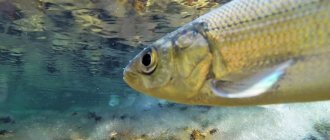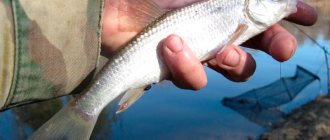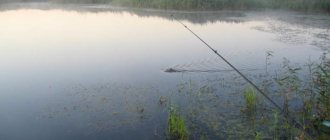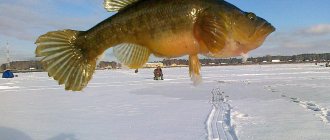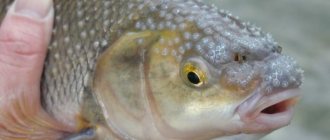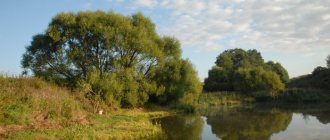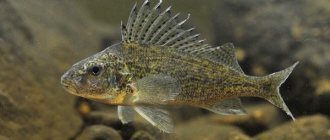More than 30 thousand species of fish live in the oceans, seas, rivers and lakes of the world, and hundreds of new species are discovered every year. Approximately 10% of this figure consists of commercial fish. Throughout history, humans have used fish as a food source. Historically and today, the lion's share of fisheries comes from wild fish. However, aquaculture (or fish farming), which originated in China around 3500 BC, is becoming an increasingly popular industry in most countries. Overall, about one-sixth of the world's protein needs come from fish. This ratio is significantly higher in some developing countries and regions that are highly dependent on the sea. Trade in fishery products affects the overall economic situation.
Catching fish for food or for sport is known as angling. The concerted action of people to catch fish is called fishing. Such activities represent a large-scale global business that provides income to millions of people. The annual catch from all the world's fisheries for popular species (including herring, cod, anchovy, tuna, flounder and salmon) is about 154 million tons. However, the term "fishing" has a broader application. It also involves the harvesting of other organisms such as shellfish and crustaceans, often referred to as "seafood".
This article provides a list, brief description and photos of the most popular freshwater and marine species of commercial fish.
Family Sturgeon
The family includes about 27 known species of fish, found from subtropical to subarctic waters of North America and Eurasia. Sturgeon live along the Atlantic coast from the Gulf of Mexico to Newfoundland, including the Great Lakes, St. Lawrence, Missouri and Mississippi rivers, as well as along the West Coast in large rivers from California and Idaho to British Columbia.
They are found along the Atlantic coast of Europe, including the Mediterranean basin, especially in the Adriatic Sea and the rivers of Northern Italy; in rivers flowing into the Black, Azov and Caspian seas (Danube, Dnieper, Volga and Don); in Russian rivers feeding the Arctic Ocean (Ob, Yenisei, Lena, Kolyma); in the rivers of Central Asia (Amu Darya and Syr Darya) and Lake Baikal. On the Pacific coast, sturgeon are common in the Amur River along the Russian-Chinese border, on Sakhalin Island, the Yangtze River and other rivers in northeast China.
Throughout their extensive range, almost all species in the family are endangered or at risk due to overfishing and pollution. For this reason, the laws of most countries prohibit sturgeon fishing. Although illegal fishing of these vulnerable fish continues to this day.
Cod family
All representatives, with the exception of burbot, are marine inhabitants. Small species feed on plankton, while large fish are predators. Cod have delicious dietary meat. Fat during fattening primarily accumulates in the liver rather than in muscle tissue.
Atlantic cod
Found in temperate latitudes of the Atlantic, it does not enter warm waters. The length of an adult individual can reach 180 cm, and weight - 50 kg; For commercial purposes, individuals with a length of 40 to 80 cm are used. The fish spends most of its life at depth, moving to shallow water only during the spawning period. Cod feed on fry, shrimp and juveniles. The species is of great commercial importance.
Burbot
The fish is common in northern rivers and lakes of Europe and Asia. Burbot eats and spawns in the cold season, and in warm water falls into torpor. The length of the body can exceed a meter, and the weight can reach 18 kg. Juveniles eat dragonflies, crustaceans and fish eggs. Adults eat carp, small salmon, and perch. The burbot fishery has a beneficial effect on populations of other fish species.
Haddock
A bottom-dwelling fish that lives in the northern regions of the Atlantic Ocean off the coast of North America and Europe, as well as in the Norwegian and Barents Seas. Adults on average reach a length of 50 to 70 cm; average weight - 3 kg. The food source is invertebrates, crustaceans and small fish. Haddock is of great commercial importance; it is in third place in terms of the number of catches among the cod family.
Navaga
The fish inhabits the northern seas of the Pacific Ocean. Navaga leads a coastal lifestyle and rarely goes deep. The average body length is 30 cm, and the weight often exceeds 500 g. Navaga feeds on worms, crustaceans and young fish. The population is quite stable, so it is regularly harvested in large quantities.
Clown fish
Clown fish - the name of this aquatic inhabitant already speaks for itself. Representatives of this species have a unique, eccentric and very bright color. Some of the most common colors include purple, fiery orange, yellow and red. The peculiarity of these fish is that they are classified as hermaphrodites. If the female dies, the male is able to reproduce offspring himself.
20 0
Salmon family
Home to all species of the family is the Pacific and Atlantic oceans. Most salmon spawn in freshwater bodies of water, rivers and streams in the Northern Hemisphere. After spawning the fish dies. Salmon meat has an excellent taste and delicate texture, and caviar is considered a delicacy.
Salmon
Atlantic salmon is a typical representative of the Arctic and northern regions of the Atlantic Ocean. Its length can exceed a meter and its average weight is 10 kg. Young individuals living in fresh water bodies eat insects, crustaceans and small fish. The food source for adult fish is other commercial species such as herring, sprat, capelin and smelt. Recently, the number of salmon in their natural habitat has decreased; artificial breeding is used to restore wild populations.
Pink salmon
This fish is an inhabitant of the coastal zone of the Pacific and Arctic oceans. The average size of pink salmon is 50 cm in length. During the spawning period, as it approaches fresh water, pink salmon change the color of their scales from silver to dark brown. Adults living in seawater feed on fry, squid and small fish. The catch of pink salmon varies depending on the year.
Chinook
The fish lives on the Asian and North American Pacific coasts. The shape of Chinook salmon resembles large salmon. The average length of adult individuals is about 90 cm. Weight usually does not exceed 25 kg. Juveniles feed on fry, larvae and insects. Marine populations eat squid, shellfish and small fish. Most Chinook salmon are caught in Kamchatka. Due to active fishing, the number in the natural environment has decreased significantly. Today fish is an object of fish farming.
Chum salmon
One of the common species of the salmon family, living in the North Pacific Ocean. The average body length is 70 cm, the weight of an adult male is at least 5 kg. The food base for the fry is insects and worms; adult fish eat the juveniles of other species, crustaceans and mollusks. Industrial fishing is carried out on a large scale, but due to climate change, chum salmon are gradually moving north.
Red salmon
An anadromous fish that lives most of its life in the waters of the North Pacific Ocean. As a rule, it enters lakes to spawn. The maximum body length is 80 cm, weight exceeds 3 kg. Sockeye salmon mainly feed on crustaceans, which have high nutritional value. The fish is the second most important commercial fish in the Far East.
Coho salmon
The species is distributed along the North American and Asian coasts of the Pacific Ocean. Populations on the eastern and western coasts of Kamchatka are of commercial importance. An adult can reach a length of 88-98 cm and a weight of 7-14 kg. Juveniles living in fresh water feed on insect larvae and algae. Adults hunt squid, herring, navaga, cod and pollock. The catch fluctuates from year to year; today, coho salmon are increasingly being bred in artificial conditions.
Nelma
Nelma is found in the rivers of Siberia and the Far East, which connect to the Arctic Ocean. Length is up to 1.3 m; The weight of an adult reaches 30-40 kg. This freshwater predator feeds on small fish and larvae. The catch of nelma is under control; in some areas, fishing is completely prohibited. The number is negatively affected by habitat pollution, illegal fishing, as well as difficulties in breeding in captivity.
Organic world of the Atlantic Ocean
The Atlantic Ocean, whose organic world differs from north to south, has areas in which the presence of a small number of animals is observed. In these places, the number of some species does not reach 100 individuals. However, there are habitats for numerous animals and microorganisms.
Thus, in the tropical parts of the Atlantic Ocean there is a low level of phytoplankton reproduction. The northern and southern parts of the Atlantic Ocean have a rich diversity of marine fauna.
Types of fish
More than 40% of the world's total fish is caught in the waters of the Atlantic Ocean. Fisheries are regulated by international agreements. Thanks to this, since the late 70s of the last century, the populations of many ocean inhabitants have been gradually restored. Different parts of the ocean produce different fish.
| Atlantic Ocean section | What kind of fish are caught? |
| Northern waters | Notothenia |
| Blue whiting | |
| Cod | |
| Herrings | |
| capelin | |
| Anchovies | |
| Sea bass | |
| Sardines | |
| Halibut | |
| Haddock | |
| Salmon | |
| Pink salmon | |
| Southern waters | Tuna |
| Mackerel | |
| Horse mackerel | |
| Hake | |
| Sphirena | |
| Cornerelium | |
| Ctenophores |
In addition to commercial fish, the Atlantic Ocean contains the following fish:
- Marlin.
- Whiting.
- Sailbeard.
- Peacock blenny.
- Pink pagelus.
- Maklovin.
- Sarg.
At great depths of the ocean there are fish that official science calls bathydemersal. They are characterized by a dense body and weak buoyancy. Some fish are capable of burrowing into the ground. For example, flounders and stingrays. Other species spend their entire lives swimming along the bottom in search of food. Examples of such fish are the Atlantic roughy and Patagonian toothfish.
Coral reefs are home to a variety of fish, with more than 6,000 species. Most often, all types of coral inhabitants are bright, colorful fish. These include parrot fish - about 80 species, surgeon fish - about 40 species, more than 30 species of goby and rock perch.
Animals of the Atlantic Ocean
https://www.youtube.com/watch?v=mTN3cTvVWCw
The Atlantic Ocean, whose organic world contains more than 20,000 species of fish, is distinguished by the diversity of animals. Animals live in all layers of ocean waters. So, in deep waters you can find sponges, annelids, and starfish. In the tropical waters of the ocean live moray eels, barracudas, and sharks that are dangerous to people. But there are quite peaceful and cute animals in the Atlantic Ocean.
King Penguin
This bird, which lives in the southern waters of the Atlantic Ocean, reaches 1 m in height and weighs only 18 kg. Its diet depends on the squid population.
But, if for some reason there are not enough squids, the penguin can feast on fish. This strange bird can dive up to 300 hundred meters below sea level. While getting food, the penguin stays underwater for more than 5 minutes.
Monk Seal
An animal with a cute face lives in the area of the island of Madeira. Thanks to their unique skin, covered with fine hair, monk seals have become the object of uncontrolled hunting. Scientists estimate that only 700 monk seals remain. The animal feeds on small fish and shellfish. Life expectancy is 45 years.
Sea Horse
The peculiarity of the seahorse is that it is a bony fish. Its closest relatives are tuna and salmon. The seahorse feeds with the help of its thin proboscis.
He sucks food with it, which goes straight into the stomach. These fish are excellent camouflages. They can change color depending on their surroundings. Seahorses reproduce like everyone else. The male produces offspring.
Green turtle
The animal got its name from the green fat under its shell. The color of turtles can be yellow, brown, gray, black. The green turtle has a large shell, the color of which can change depending on the environment.
The length of an adult turtle is 1.5 m. The weight can reach 190 kg. The green turtle feeds on algae. But sometimes he can treat himself to jellyfish.
Long-nosed dolphin
In fact, this species is called a dolphin. He has a cheerful character. Travelers notice that he can perform incredible tricks when he jumps out of the water. Just like other species of dolphins, the spiny dolphin communicates through various sounds and whistles. The main food is crustaceans, shellfish, squid, fish. Dolphins find prey using echolocation.
Manatees
Another name for this animal is sea cow. It is a very heat-loving animal, so it can only be found in the warm southern waters of the Atlantic Ocean. Mainly in the Amazon River, off the coast of the Caribbean islands.
As befits a cow, even a sea cow, the manatee feeds on grass that grows at the bottom of reservoirs. The manatee reaches a length of up to 4 m. Its weight is about 600 kg. A special feature of manatees is their flippers, which work like boat oars. In addition to relatively peaceful animals, the waters of the Atlantic Ocean are home to more severe inhabitants.
Walrus
This massive and formidable animal lives in the eastern Canadian Arctic and western Russian Arctic. Walruses live in large colonies. They communicate with relatives through a peculiar growl. The animals have long fangs that resemble elephant tusks. The lifespan of walruses is 40 years. The basis of the diet consists of invertebrate organisms.
Great white shark
This is the largest representative of the species. The shark is a cartilaginous fish. They have five senses and electromagnetism. There are about 300 teeth in the mouth of this predator. Triangular killing tools are arranged in three rows. A victim who falls under these deadly “millstones” will be immediately torn to pieces.
The lifespan of a white shark is 60 years. Throughout its existence, the animal feeds not only on seals, turtles, fish, but also on its relatives. True, smaller and weaker specimens are eaten. The length of the animal is more than 6 m. Weight is more than 2 tons. The largest number of white sharks are observed off the island of Gier on the coast of South Africa.
Finfall
These animals live in the Southern Hemisphere and are classified as cetaceans. The length of the final whale reaches 30 m. Weight can reach 40 tons. This whale is different in color: the head on the left is darker than the right; the belly is white, in addition, there are longitudinal stripes on the belly; The upper part of the body is dark brown or dark gray.
Blue whale
It is the largest mammal on Earth that lives in the ocean.
Its weight is 200 tons, length is up to 35 m. The blue whale is under the protection of international organizations. This huge animal easily dives 200 m in search of food. According to some reports, the blue whale can dive to a depth of 500 m. It stays under water for a maximum of 50 minutes.
Those who have seen a blue whale in natural conditions admire its fountain: when exhaling, the whale spews a spectacular stream 10 m high, reminiscent of a giant fountain. The blue whale is monogamous. Males choose a female with whom they spend their entire lives. Animals live in pairs.
Only occasionally can you see whales in numbers of up to 60 individuals feeding together. The blue whale has the only enemy on this planet - the killer whale. Predators attack several individuals at a time and tear the whale to shreds.
killer whale
The killer whale is the ocean's most bloodthirsty predator. The size of the victim does not matter to her. Killer whales attack in schools and tear apart their prey. Because of their killing style, they are considered the most brutal predators. This is a black and white animal, reaching a length of up to 10 m, weighing up to 5 tons. Predators live in packs, led by a dominant female.
Plants of the Atlantic Ocean
The flora of the Atlantic Ocean is diverse. But its growth depends on the temperature of the zone in which certain plants are located. Most of the plants in the Atlantic Ocean are flowering plants and algae.
Zostera and posidonia are the most common plant species on the Atlantic floor. Posidonia is of greater interest.
It grows on the ocean floor and creates colonies. Such a community can reach 1 km in length. The length of one plant is 8 m. Therefore, it is considered the largest on the planet. Posidonia is a plant that has survived to this day, having overcome the time barrier of 100 thousand years. Kelp grows in cold waters. Moderate temperatures create conditions for the proliferation of brown algae and fucus. The tropical parts of the Atlantic Ocean are characterized by the absence of algae. Only in some places you can find small colonies of marine plants. Phytoplankton grows and develops at a depth of 100 meters.
Family Flounder
Representatives of the family are found in all open seas, sometimes they enter rivers. The distinctive features of flounders are their flat body and eyes located on the right side. Adults lead a benthic lifestyle and burrow into the ground. Some species mimic - change color depending on the color of the bottom.
Black halibut
The fish lives in the Barents, White and Okhotsk seas. The average length of an adult is 55-65 cm; weight - 5-7 kg. Black halibut lives at great depths, and in the warm season it approaches the coastal zone. It feeds on shrimp, capelin and pollock. Halibut is caught by trawl. The bulk of the fishery is carried out in the Barents Sea.
Dab
A small fish from the flounder family, found in the Barents and White Seas. On average, adult individuals reach a length of 20-30 cm and a weight of 150-300 g. The ruffed moth lives at a depth of 20 m and does not migrate. The diet is based on mollusks, crustaceans and small fish. The fish is a by-catch in trawl fishing for cod.
Sharp-headed flounder
Bottom fish are common in the Sea of Japan. It lives in coastal waters and migrates twice a year. The length of an adult individual is up to 46 cm, weight can reach 500 g. Sharp-headed flounder feeds on mollusks, worms and fry of other fish. During the winter, food stops. The main catch is carried out by trawl in Peter the Great Bay.
Guasa - ocean giant
Oceanic large fish from the rock perch family. The giant Pacific grouper also belongs to this genus. This is a large fish that can grow up to 2.5 meters in length and weigh 363 kg. Large guasas are common in the waters of the Bahamas, Florida Keys, most of the Caribbean Sea, and almost the entire coast of Brazil. In the eastern Atlantic Ocean, grouper can be found from Congo to Senegal. Fishermen used to often hunt them, catching them in large parties, and today these large inhabitants of the ocean become victims of poachers, as they regularly return in large flocks to the same place to spawn. Since recent times, hunting for large guaçu has been prohibited by law.
Giant Atlantic groupers in the ocean feed on such representatives of the marine world as crustaceans, octopuses, fish, and young sea turtles. Most of them are hermaphrodites; female reproductive cells mature earlier than male ones. All individuals mature as females, only as adults some become males.
Herring family
Representatives of the family are one of the main commercial fish on the planet. They are found in all climate zones. Herring gather in huge schools, the number of which is measured in thousands of individuals. Group behavior allows them to better protect themselves from predators.
Pacific sardine
The Pacific sardine is found in the Sea of Japan off the coast of the Kuril Islands, Sakhalin, Kamchatka, Korea and China. Sometimes it enters desalinated waters. Adults reach a length of 20 cm and a weight of about 100 g. The main source of nutrition is zooplankton; in summer, sardines consume phytoplankton. If the water is cold, then the fish are reluctant to approach the shore. This negatively affects the amount of catch.
Tulka
The fish is common in salt and fresh waters of the Black, Azov and Caspian seas. Adults reach 9-15 cm in length. Tulka prefers to swim near the shore. Here the fish finds crustaceans, mollusks, insects and fry. They catch sprat in nets along the main migration routes.
Sprat
Sprat, also known as sprat, is found in the Azov, Black and Baltic seas. Feeds on larvae and crustaceans. The average size of an adult is 10 cm. Sprat is the most important commercial fish in the Baltic. They make delicious canned food from it.
Atlantic herring
Herring can be found on both sides of the North Atlantic Ocean. This schooling fish stays away from the coast and has a complex migration system. Most often, the commercial size is 20-25 cm. The diet consists of plankton and small fish. Herring has been caught for many centuries, but it still has a high value.
What fish is considered commercial?
Commercial fish is subject to catch. This can be recreational fishing for the purpose of eating animals or for fertilizers, making fats, clothing and bags.
Northern peoples, for example, make clothes, bags, and shoes from the skin of water inhabitants. This is a private business. Almost every housewife of Evenki settlements knows how to make crafts from fish.
The Evens adapted to making clothes from fish skin
Fish caught by enterprises for sale on an industrial scale is also considered commercial. The production is also used not only for meat. Medicines, fertilizers and technical fats are made from fish components.
Some products given by the inhabitants of the waters are unexpected. For example, artificial pearls are made from scales.
It turns out that there is no minimum fishing volume. If fish that are not of interest to industrialists are caught individually, the species is also considered commercial.
The upper catch limit is set annually by the state and applies to mining enterprises. They are interested in valuable commercial fish, since their sale is economically profitable. In other words, for an animal to be commercially viable, not only a stable, solid population size is needed. Also required:
- demand in domestic or foreign markets
- the schooling lifestyle of fish, or their impressive size
- reach for fisheries in terms of habitat
Thus, organizing industrial fishing for benthic species that live at thousand-meter depths and do not rise to the surface is unprofitable, labor-intensive, and sometimes impossible.
They catch fish that rise to the surface or live at accessible depths. Industrialists work in areas where animals gather. Otherwise, prey, especially small ones, are removed from the waters on a small scale. This does not justify the costs of organizing the fishery.
If small commercial fish are of interest to industrialists only in a school way of life, then the giants of the waters are also caught in a solitary way of life. Let's take the beluga, for example. This relict red fish reaches a weight of 2 tons. Dozens and sometimes hundreds of kilograms of eggs can be obtained from one individual. Therefore, large commercial fish are profitable even with isolated incidents of capture.
Not only marine species, but also river and lake species are recognized as commercial species. They can:
- Foraged in the wild.
- Bred on fish farms.
Raising fry in artificial conditions makes it possible to maintain a stable number of significant populations. Their reduction hits the economy. This happens, for example, with sprats.
In 2021, in the Azov-Black Sea basin they were produced by 12 thousand tons less than in 2021. The catch of sprat decreased by 5 thousand tons. But for other commercial species, an increase was recorded last year.
Parrot fish
Parrot fish is one of the most unusual fish with a unique coloring. These are quite large individuals that can reach almost 1.5 meters in size. Representatives of this species most often choose coral reefs in the Pacific and Indian Ocean as their habitat. The fish was named this way not only because of its bright and variegated color. Individuals have a peculiar beak, reminiscent of that of the bird after which they are named. There are also parrotfish that have external incisors or fangs. A special feature of this creature is also its ability to form a cocoon of mucus in which they sleep. The necessary contents are released from the mouth of the fish.
Marine game fish
The total number of fish on the planet is 20 thousand species. One tenth, that is, about 2 thousand of them, are commercial. Most of these couple thousand live in the seas. There are also freshwater and anadromous ones. The latter include species that live most of the time in some water bodies, and go to others to spawn.
Marine commercial fish live and breed in salty waters. Types are divided into:
- on pelagics, which live in the upper layers of the seas
- bottom
- and bottom
The latter includes, for example, flounder. She, like other benthic and benthic species, has light meat. Red fish stay close to the surface.
Ocean commercial fish are caught using five types of fishing:
1. Trawler. The animals are caught in a funnel-like net. She is being pulled by a trawler. This is the name given to ships with a length of 20-120 meters. Trawlers are equipped with ultrasonic technology. With its help, fishermen determine the places where fish gather, distinguishing commercial ones from non-commercial ones.
2. Tiered. The vessels are small for him, up to 15 meters in length. The gear is thrown parallel to each other at a distance of a couple of meters, sinking to the bottom. Buoys, leaders, ridges and hooks are connected. Often gear is thrown from the shore or not far from it.
3. "Trap". Fishermen use traps. These are steel cages. They are covered with a net and sink to the bottom. This is an improved version of the cans on a string that teenagers throw into ponds. You wait a couple of hours and take out a container full of fry.
4. Jigerny. Otherwise called hook fishing. Lures use hooks. Tackle with fish is lifted on board using winches. Each tackle has up to 30 hooks. Approximately 5 fishing lines are attached to the winch. That is, one machine can lift 150 fish on board.
5. Clean. This type of fishing is based on the use of biodegradable materials. The harmful influence of networks and traps if they are lost is eliminated.
Marine species, like other species, are divided into families of commercial fish. This makes it easier to remember sea creatures and classify them.
Names and types of commercial fish
Sturgeon
The fish of the family are devoid of scales and are relict species. The animals' bodies are covered with five rows of bony projections. The internal structure of sturgeon is distinguished by the absence of a spine. Instead, there is a chord - a kind of string made of cartilage.
Stellate sturgeon
She is called the mother of sturgeons. The fish has a dark body. The bone mounds on it are white. The length of the stellate sturgeon reaches 3-4 meters, weighing tens of kilograms.
The stellate sturgeon population is being undermined by minnows. These small fish, caught only by private fishermen, eat sturgeon caviar. The stellate sturgeon themselves, meanwhile, feed on mosquito larvae, crustaceans, and benthos. Relict animals eat other fish only when there is a shortage of basic food.
Beluga
The largest of the fish found in rivers, it reaches a length of 6 meters and weighs up to 2.5 thousand kilograms. Records are taken from the past. In the 21st century, belugas weighing more than 300 kilos are rarely caught.
Beluga is found in the Caspian and Black Seas, swimming into the Danube and the rivers of the Urals.
Russian and Siberian sturgeon
The Russian species lives in the Sea of Azov. The fish go to rivers to spawn. Until the flow of reservoirs was blocked, sturgeons swam unhindered to the upper reaches. Dams and hydroelectric power stations have made it difficult for fish to migrate, especially large ones.
Siberian sturgeon is a river fish. The fish do not go out into the open sea, feeding at the mouths of reservoirs. Individuals are smaller than Russians, growing up to 2 meters in length, gaining a 200-kilogram mass.
Thorn
It is a consequence of crossing beluga, sturgeon, and stellate sturgeon. Sea fish. Interspecific crossing, by the way, is typical for most sturgeons. This complicates the classification of relics.
The fish got its name because of the cone-shaped spines running along its back. The animal is also distinguished from other sturgeons by the antennae on its lower lip.
Salmonidae
Salmonids have an adipose fin near their tail. There is also a main dorsal process. Otherwise, salmonids vary greatly. Suffice it to say that among the representatives of the family there are both red and white fish.
Caspian and Baltic salmon
The Caspian species lives off the western shores of the Caspian Sea. Baltic fish live in the Black and Aral Seas.
Caspian salmon can weigh up to 51 kilograms, but often the mass of the fish is 10-13 kilograms. Baltic fish are slightly larger.
On the White Sea coast it is simply called fish. When the north was being developed, the salmon population here was so large that only red fish were found. That's why the catch was called "fish". They didn’t know the other one. Salmon fed the settlers, allowing them to settle on harsh lands.
Scientists have found that salmon detects the smell of its native river at a distance of 800 kilometers. The fish spends the main part of its life in the sea. Salmon enter rivers to spawn.
The taste is similar to salmon, but less fatty. The red meat of Chinook salmon is especially prized in America. In Oregano and Alaska, the fish is even considered a national symbol.
Chinook salmon are also found in Russia. The fish is the largest among salmon. That’s why I sometimes call the animal king salmon.
Red fish, consisting of 5% fatty amino acids. Salmon meat is notable for its thiamine content. It blocks the harmful effects of alcohol. Therefore, nutritionists advise ordering dishes with chum salmon at parties.
Like pink salmon, chum salmon die after spawning. Fish leave the sea for rivers at 3-6 years of age. Accordingly, chum salmon live the same amount of time. Sometimes individuals are ready to reproduce only at 7-10 years of age.
Among salmon, pink salmon are the most stubborn and poorly oriented in space. Sometimes, instead of standard spawning sites, fish swim into unsuitable branches of rivers. If the entrance to their native reservoir is washed away, pink salmon literally jump onto the “fence.” There is no turning back or detours for humpback fish. This plays into the hands of miners who catch pink salmon during a period of turmoil.
When at sea, pink salmon are gray and almost not humpbacked. The body acquires a brownish-red tint and changes in rivers, that is, before spawning.
During the spawning period it turns bright red. In the sea, sockeye salmon, like other salmon, are silvery. Externally, the animal looks like a chum salmon. Inexperienced anglers confuse the species.
Sockeye salmon is a small fish. Representatives of the species grow to a maximum of 80 centimeters, gaining a 4-kilogram mass.
During spawning, sockeye salmon turns red
It is not just gray, but has a distinct metallic cast. That's why coho salmon are nicknamed silver salmon. It grows to a meter in length, weighing about 15 kilograms.
Russians call coho salmon not silver, but white salmon. This is confusing to some. The fish has red meat.
Coho salmon are also called silver salmon
It is a symbol of the ichthyofauna of Siberia. The population lives off the coast of the Arctic Ocean. Nelma do not tolerate salt water with levels above 20 ppm. Therefore, fish concentrate at the mouths of rivers flowing into the ocean.
White salmon do not swim further west than the White Sea. The fish are red and large, reach one and a half meters in length, gaining 50 kilograms of mass.
Whitefish
Opens the list of white meat salmon. Fish are variable, within the same body of water they can appear in 2-3 different forms. This makes species classification confusing.
Whitefish can be tall, short, elongated, but always toothless. This distinguishes representatives of the genus from other salmonids.
Omul
It is one of the main commercial fishes of Lake Baikal. There is also European omul. It is larger than the Baikal one. A 5-kilogram fish in the lake is nonsense, caught only once in the area of the Selenginsk settlement. Among European representatives of the genus, 4-5 kg individuals are more common.
Omul has tender, fatty, white meat. Non-saturated with healthy fatty acids and vitamins.
Trout
The genus includes 19 salmon subspecies. Some of them are marine, reaching a length of 100 centimeters. Other trout are river trout, stretching to a maximum of 50 centimeters.
All trout are voracious and active regardless of the weather. Fishermen fish even despite thunderstorms and winds. Trout use them to catch insects falling into the water. Some of them are torn off by the wind from coastal vegetation.
Smelt
Commercial salmon fish with white meat that smells like fresh cucumbers. For this reason, smelt was popularly called a cucumber. They catch it in cold waters, near the banks. The fish don't go far from them.
In Russia, smallmouth, Asian and European smelt are fished. These are commercial fish species, often caught by industrialists. Due to the small size of smelt, private owners prefer to catch larger inhabitants of the waters.
Carp
All cyprinids have high bodies and one dorsal fin. Most members of the family are hardy, surviving in oxygen-poor, freezing water bodies.
Carp
The fish is freshwater, but can swim into the brackish coastal areas of the Azov and Caspian Seas. Carp prefers areas overgrown with algae and grasses with a slow flow.
The body of the carp is covered with large and hard scales. There is a dark spot at the base of each plate. Another distinctive mark is two pairs of antennae on the upper lip of the animal.
Carp
Fattening up like boars. The rate at which carp gain weight is really comparable to the growth of pigs, and the meat of the fish is fatty.
The name of the species comes from the Greek word "karpos", which means "fruit". The fish are indeed prolific. The female lays approximately 1.5 million eggs.
Bream
Sensitive to gear resistance. Suspecting something is wrong, the bream immediately throws the bait. But the carp is omnivorous. You can catch bream using croup, grass, or live bait.
Unlike most cyprinids, bream is sensitive to the oxygen saturation of water. When its percentage decreases in the summer heat, the fish float to the surface. There is a chance to catch large bream, which usually stay near the bottom.
Asp
Among cyprinids, it is a pronounced predator, but individuals are dispersed throughout the reservoir, which complicates the industrial production of the species.
The asp reaches 90 centimeters in length, gaining a mass of about 7 kilograms.
Roach
Bream is not particularly cautious; it can be caught using any tackle without choosing bait. Gluttony allows small fish to gain considerable weight. In some lakes of the Urals, 2-kilogram individuals are found. The standard weight of a roach is 400 grams.
Roach loves overgrown rivers and ponds with sluggish water. The abundance of vegetation makes catching difficult. Gear gets tangled in grass, snags, and algae.
Vobla
It is mined in the Caspian basin. The fins of the fish are red. When dried, vobla is considered a beer delicacy, which is why it is caught on an industrial scale.
In winter, the roach becomes covered with thick mucus. It protects the fish from the cold. Seeking warmth, cyprinids huddle close to the shores of reservoirs.
Herrings
The backs of herrings are always dark, and the bellies are silvery. Representatives of the family are laterally flattened and elongated. A single fin is visible on the back of the fish, and the tail has a pronounced notch.
On the belly of the sprat there are scales that resemble thorns. These make up the keel of the fish. It makes the sprat invisible to predators looking at it from the depths. Additionally, the keel adds streamlining to the animal, improving maneuverability.
The average length of a sprat is 10 centimeters. The fish is prolific and widespread. In the 19th century, sprat was not eaten off the coast of England, but was sent to fertilize fields, so there was a massive catch.
Sardines
For the first time, mass catching of the species began off the island of Sardinia. Hence the name of the fish. It reaches a maximum length of 25 centimeters.
The sardine differs from other herrings in having wing-shaped scales at the ends of the caudal fin and protruding rays of the anal outgrowth.
This is a miniature herring. Some species live in fresh waters. Thus, the Abrau sprat lives in Lake Abrau, in the Krasnodar Territory. The reservoir is mountainous and cold.
Common species of sprat live in the Caspian, Azov and Black Seas.
Atlantic, Pacific, Baltic and Azov-Black Sea herring
Herring is recognized as the most numerous fish in the world. Representatives of the species prefer cold waters. The northern commercial fish reaches a length of 40 centimeters.
Historically, herring tend to migrate. Until the 15th century, for example, animals filled the Baltic and North Seas. In the 16th century, the shoals moved into Scottish waters. Perhaps the fish called Caspian, Azov and Black Sea fish today will change their names in a couple of centuries.
cod
The pectoral fins of fish are located next to or in front of the ventral fins. There are 2 anal processes, and 3 dorsal ones. The exception is the burbot. It has 1 anal fin and only 2 dorsal fins.
Lives in the Arctic Ocean basin. Approximately 0.5 million tons of cod fish are harvested from its waters annually. Some individuals reach 75 centimeters in length, weighing about 4 kilograms.
The dark back of the haddock has a lilac tint. The abdomen of an animal is milky in color. There are dark spots on the sides of the head.
It stands out among cod because it has a rich composition, is most beneficial for health, but only fresh. When defrosted, navaga loses valuable microelements and vitamins.
The average length of navaga is 40 centimeters. Externally and in importance it is similar to pollock.
The only cod fish that lives in fresh waters. They should be cold. Heat is detrimental to burbot. It is caught in the basins of the Black, Caspian, Baltic and White seas.
Among the rivers of Siberia, burbot have chosen the Yenisei and Selenga.
Cod
Lives in cold waters. Cod is caught not only for meat, but also for the tongues and cheeks of the fish. They are considered a delicacy.
Cod is often mentioned when the names of game fish are discussed. The meat of the inhabitants of cool waters is often dried. This causes the fibers to crack. Hence the name of the animal.
Black Sea mackerel
It has a brindle coloration, a laterally compressed, elongated body. The back of the animal is green. Mackerel meat is rich in fatty amino acids. The average length of Black Sea individuals is 50 centimeters.
With a length of half a meter, mackerel weighs about 400 grams. Individuals gather in schools of thousands, making it easier for fishermen to catch.
